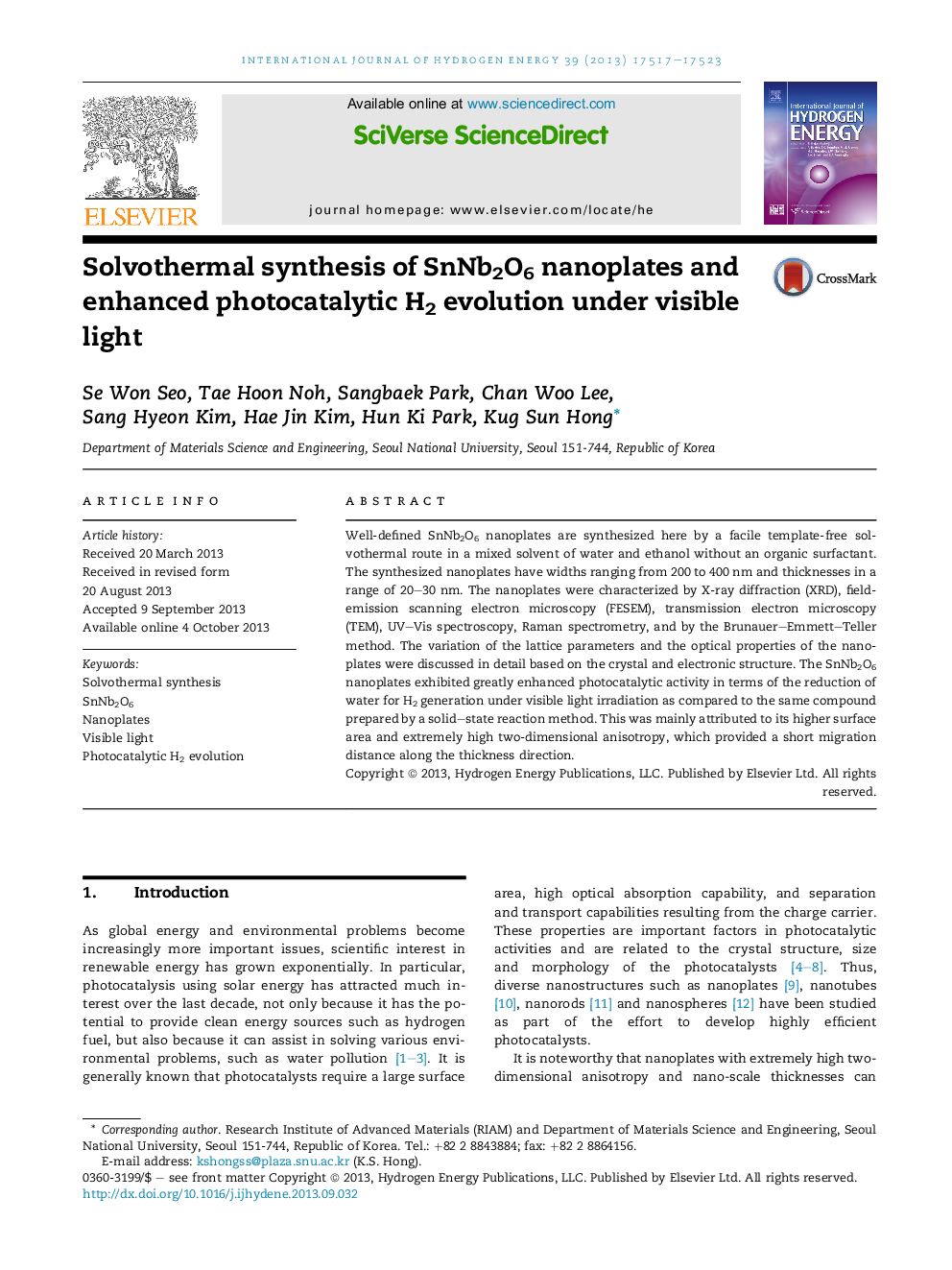| Article ID | Journal | Published Year | Pages | File Type |
|---|---|---|---|---|
| 1272214 | International Journal of Hydrogen Energy | 2014 | 7 Pages |
•Synthesis of SnNb2O6 nanoplates using a simple solvothermal method.•Enhanced photocatalytic activity of hydrogen evolution under visible light.•Nanoplate morphology with high surface area enables enhanced photocatalytic activity.•Distorted structure affects increased photocatalytic activity.
Well-defined SnNb2O6 nanoplates are synthesized here by a facile template-free solvothermal route in a mixed solvent of water and ethanol without an organic surfactant. The synthesized nanoplates have widths ranging from 200 to 400 nm and thicknesses in a range of 20–30 nm. The nanoplates were characterized by X-ray diffraction (XRD), field-emission scanning electron microscopy (FESEM), transmission electron microscopy (TEM), UV–Vis spectroscopy, Raman spectrometry, and by the Brunauer–Emmett–Teller method. The variation of the lattice parameters and the optical properties of the nanoplates were discussed in detail based on the crystal and electronic structure. The SnNb2O6 nanoplates exhibited greatly enhanced photocatalytic activity in terms of the reduction of water for H2 generation under visible light irradiation as compared to the same compound prepared by a solid–state reaction method. This was mainly attributed to its higher surface area and extremely high two-dimensional anisotropy, which provided a short migration distance along the thickness direction.
